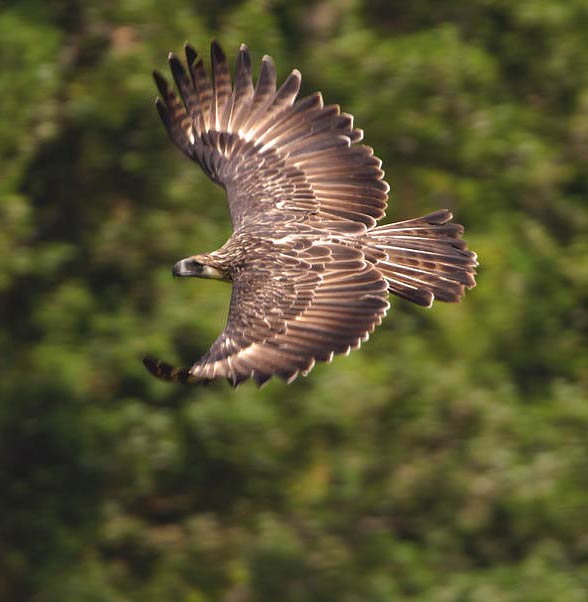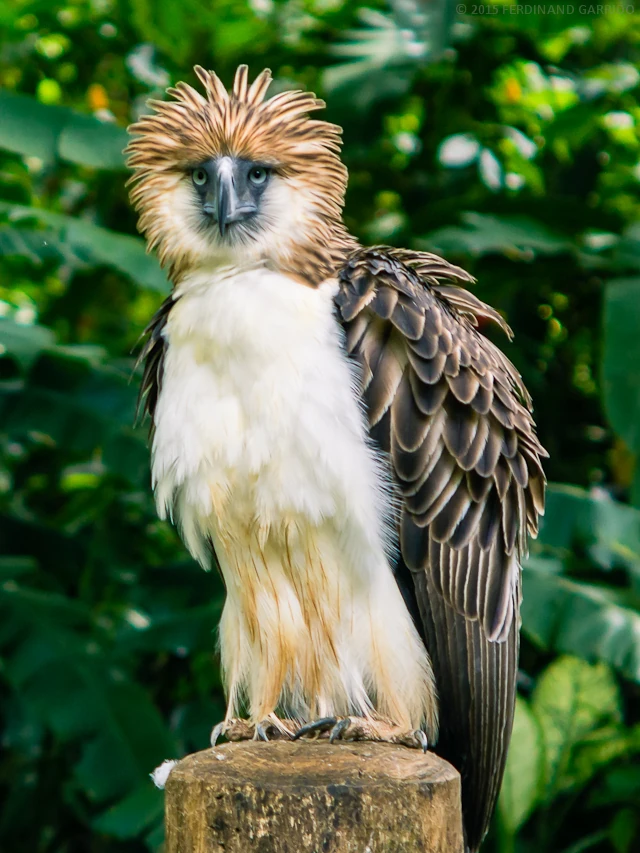The Philipphine eagle
The Philippine eagle
The Philippine eagle is one of the largest and rarest birds of prey.
A critically endangered species, fewer than 900 adults remain on just 4 Philippine islands. The Philippine eagle is 86-102 cm in total length and has a wingspan of 184-220 cm. The Philippine eagles have long brown feathers that form a shaggy mane like a crest. The eagle has a brown face and a creamy-brown nape and crown. Its back is dark brown, the underside of its wings are white. The legs are yellow with large, powerful and dark claws. The large, high-arched beak is bluish-gray. The eyes of the eagle are blue-grey in coloration. The Philippine eagle is also the longest eagle in extent. The males are 10% smaller than the females. The eagle's weight is 4.7-8.0 kg.

The Philippine eagle eats snakes, birds, and mammals such as flying lemurs and monkeys. Prey specimens found from the eagle's nest ranged in size from a small bat 10 g to a Philippine Deer 14 kg. The eagles hunting range can cover up to 40 square miles but most of Philippine's forest has disappeared since the 1600s due to logging and human encroachment less then 25% of the historical forest remains. In 1896 the Philippine eagle was discovered by British naturalist and explorer John
Whitehead. Conservation groups like the Philippine eagle foundation are studying the Eagles' behaviors in an effort to save the species. Philippine eagle pairs mate for life and produce one egg every two years.
Here are some interesting facts
- The Philippine eagle can live up to 60 years.
- Deforestation is usually the cause of its death.
- It is a vertebrate of the highest class, which can grow up to there feet.
- It is also the only blue-eyed bird of prey in the world and can see eight times the distance than that of humans.



Comments
Post a Comment